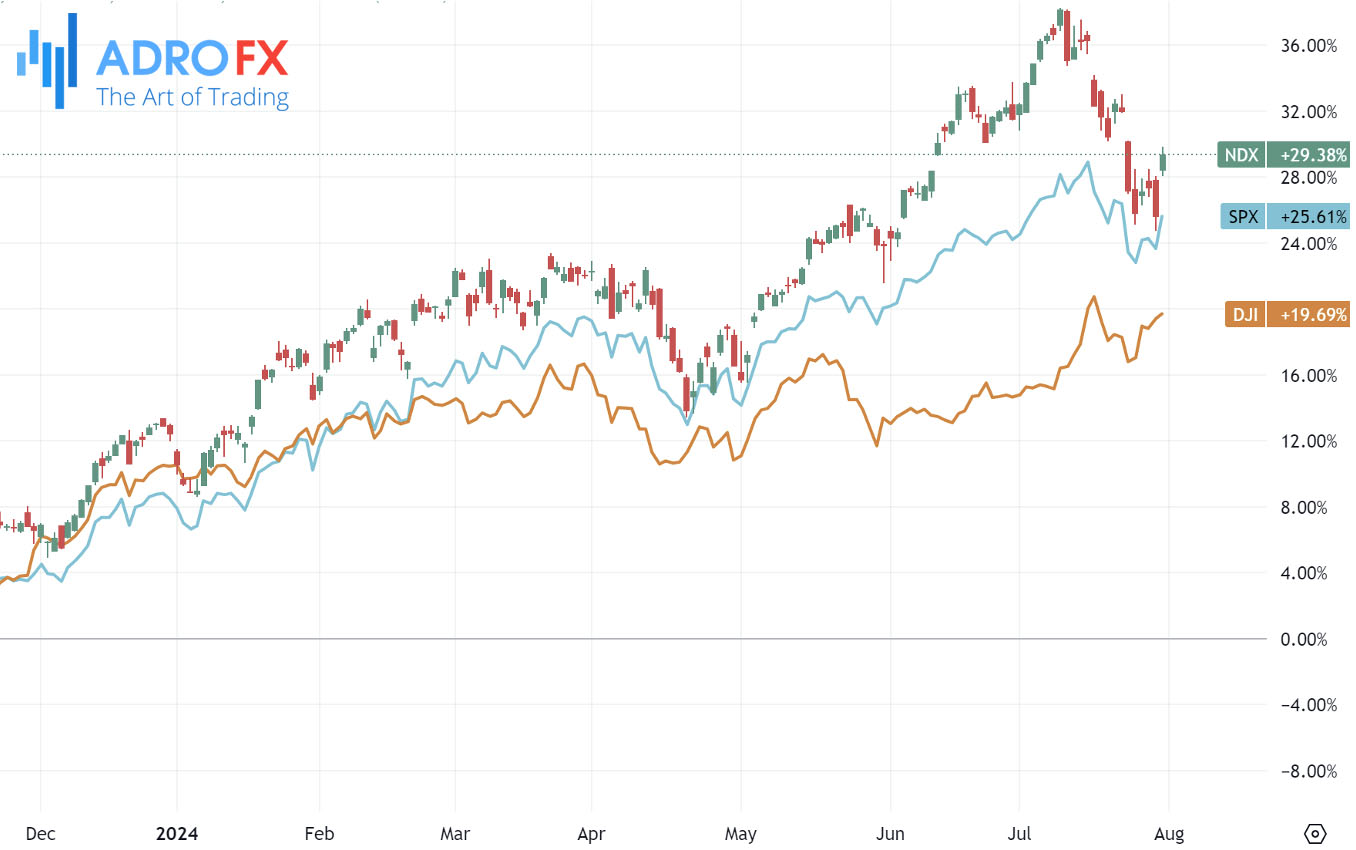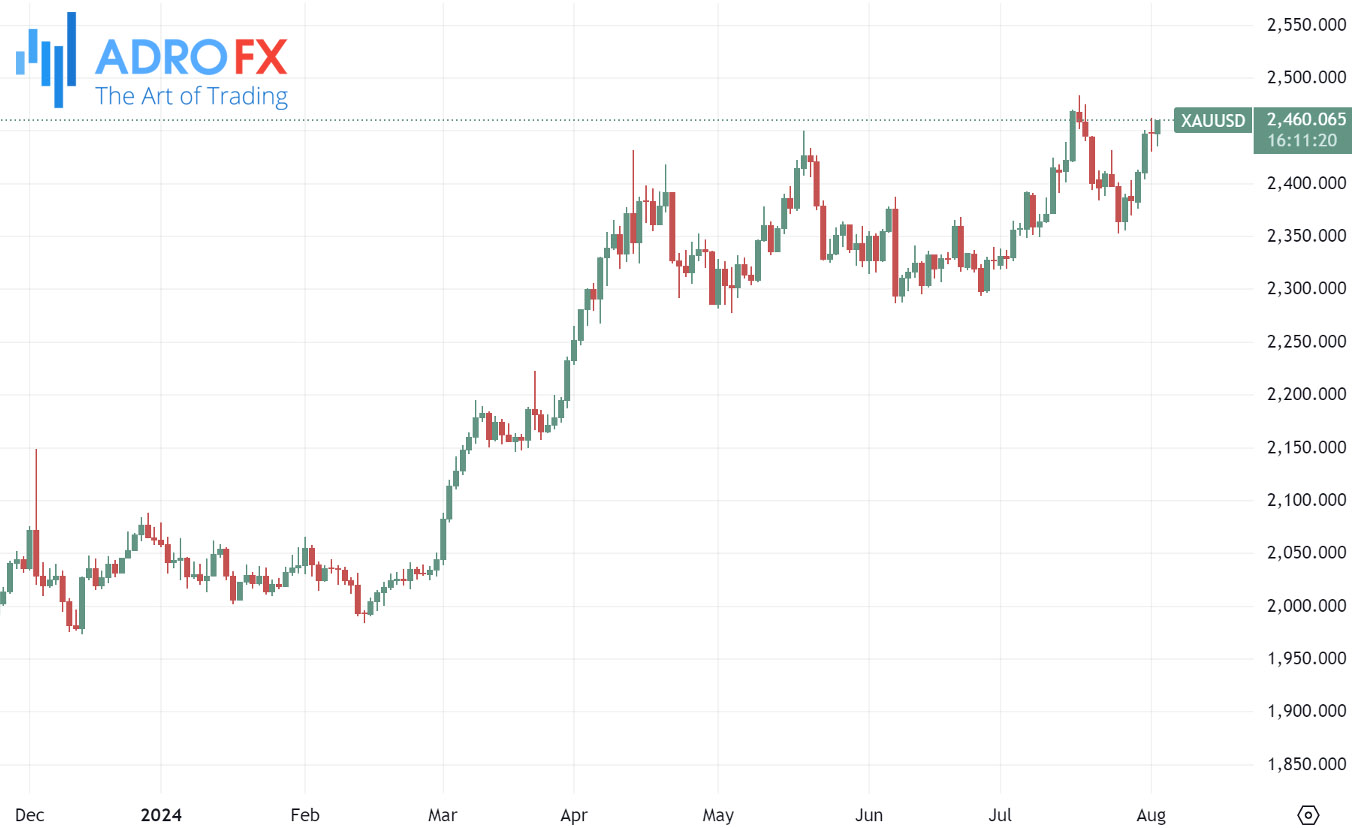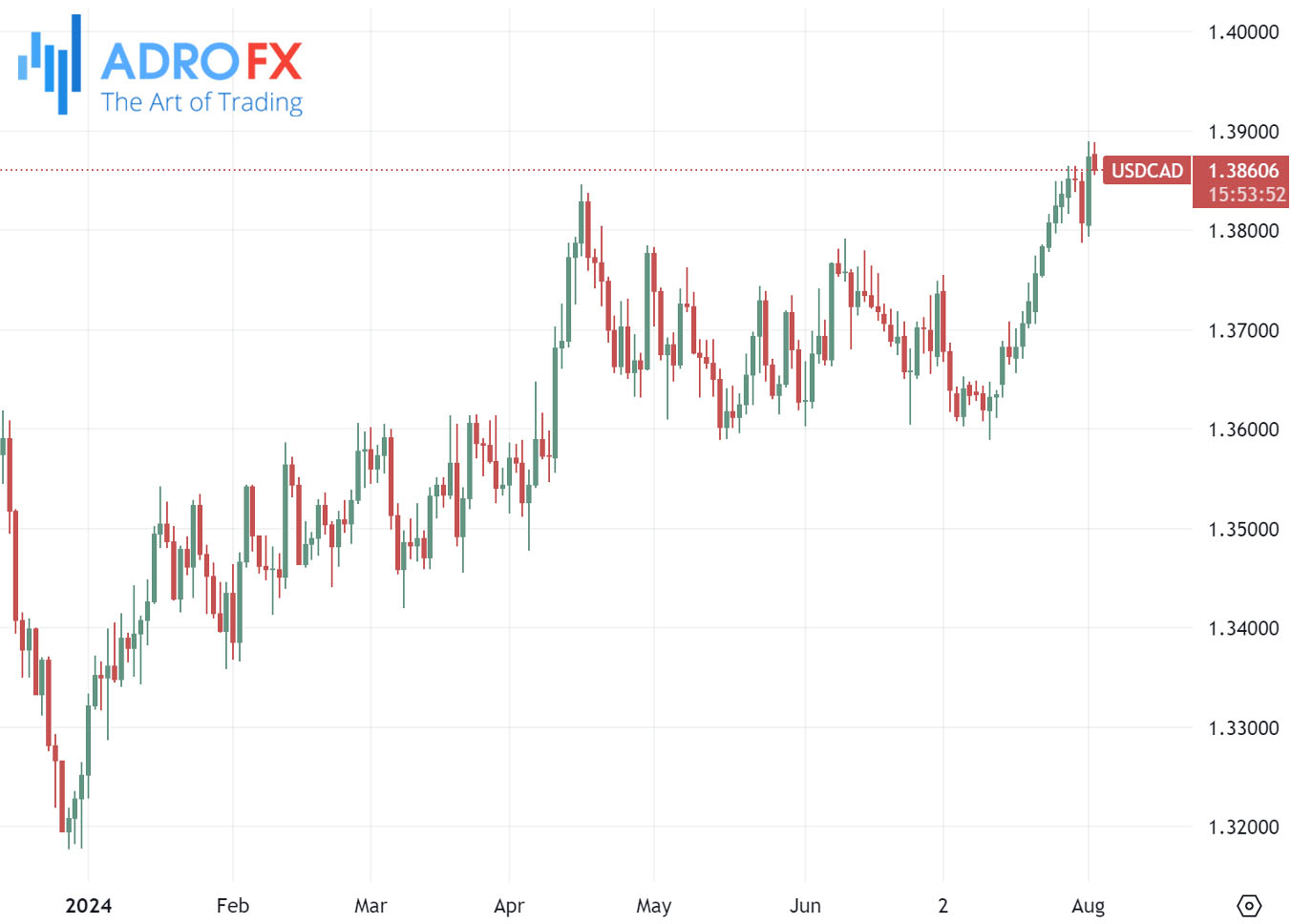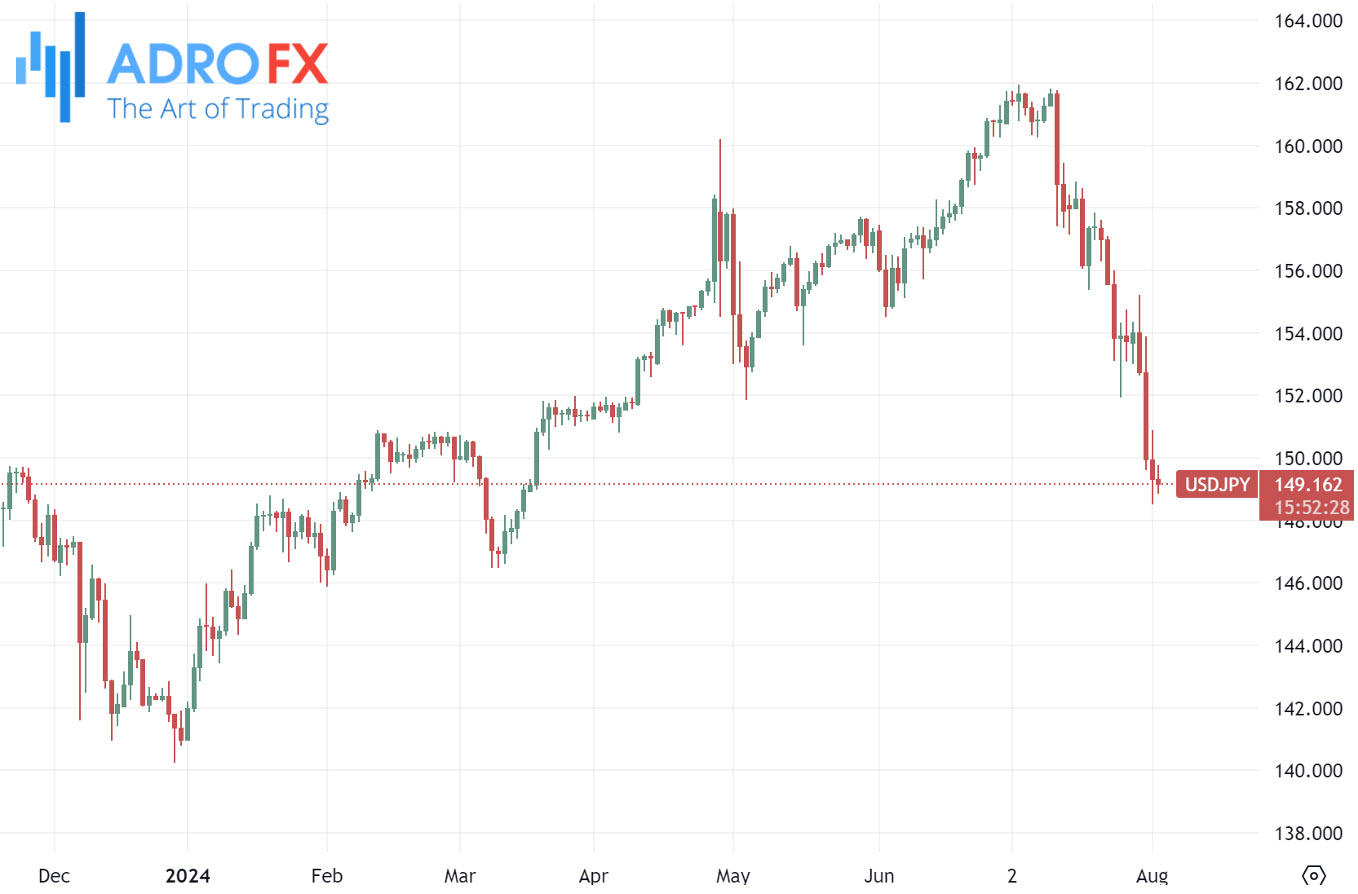Markets Tumble Amid Recession Fears as Economic Data Disappoints | Daily Market Analysis

Key events:
- USA - Average Hourly Earnings (MoM) (Jul)
- USA - Nonfarm Payrolls (Jul)
- USA - Unemployment Rate (Jul)
The S&P 500 started August under significant pressure on Thursday as softer economic data rekindled recession concerns.
The Dow Jones Industrial Average dropped 669 points or 1.6%, the S&P 500 fell 2.8%, and the NASDAQ Composite decreased 2.8%.

During the Asian session on Friday, gold prices climbed to nearly $2,450 per troy ounce. Traders are anticipating crucial US labor market reports, including the Nonfarm Payrolls and Average Hourly Earnings for July. Concerns about the US economy have intensified due to recent manufacturing and employment data, boosting risk aversion and enhancing the allure of gold as a safe haven.

The US ISM MPM Index declined to 46.8 in July, marking an eight-month low, down from 48.5 and missing the anticipated rise to 48.8. In the same period, US Initial Jobless Claims for the week ending July 26 increased to 249,000 from the previous week’s 235,000, surpassing the forecast of 236,000.
Moreover, the demand for gold has surged due to rising geopolitical tensions in the Middle East. The situation has intensified following the assassination of Hamas leader Ismail Haniyeh in Iran. According to the New York Times, Haniyeh was killed in the Iranian capital after attending the new president's inauguration. Both Iranian authorities and Hamas have accused Israel of orchestrating the attack.
Gold prices have also been bolstered by the Federal Reserve's dovish stance on monetary policy. In its July meeting, the Fed decided to keep interest rates steady within the 5.25%-5.50% range. Lower interest rates tend to increase the attractiveness of non-yielding assets like gold.
The Australian Dollar managed to recover its daily losses against the US Dollar following the release of higher-than-expected Producer Price Index data on Friday. However, this rebound may be short-lived due to heightened risk aversion ahead of the upcoming US labor market data. The Aussie Dollar is under pressure as second-quarter inflation data has reduced expectations for another rate hike by the Reserve Bank of Australia at its policy meeting next week. Markets now estimate about a 50% chance of an RBA rate cut in November, much earlier than the previously anticipated April next year. These factors are contributing to the downward pressure on the Australian Dollar.

USD/CAD dipped to around 1.3860 during the Asian session on Friday, though it remains close to the eight-month high of 1.3889 reached on Thursday. The Canadian Dollar, linked to commodities, experienced mild gains due to a slight rise in crude oil prices, as Canada is the largest crude oil exporter to the United States.

West Texas Intermediate crude oil prices edged up to nearly $76.50 per barrel at the time of writing. Crude oil prices may find support from supply risks related to heightened geopolitical tensions in the Middle East, despite persistent global concerns about oil demand.
USD/JPY traded around 149.40 during the Asian session on Friday, rebounding from a four-month low of 148.50 recorded on Thursday. The rise in the USD/JPY pair can be attributed to a stronger US Dollar, driven by increased risk-off sentiment following recent manufacturing and employment data that raised concerns about the US economy.

The Japanese Yen received support after the Bank of Japan raised its policy rate to a 16-year high of 0.25%. This move, along with the BoJ's indication that it may further increase rates if necessary, could boost the JPY. Market expectations now include two additional rate hikes before the end of the fiscal year in March 2025, with the next increase anticipated in December. This outlook might limit the upside potential of the USD/JPY pair.
GBP/USD fell towards the 1.2700 level on Thursday, driven by fresh recession fears following a miss in US Purchasing Managers Index figures, coupled with a decrease in Pound Sterling flows after the Bank of England delivered a widely expected quarter-point rate cut.

The Bank of England joined other G10 central banks in easing monetary policy by implementing an initial 25 basis points rate cut to 5.00% at its monetary policy announcement. The decision was finely balanced, with a closely split 5-4 vote from policymakers to lower interest rates. The guidance from the BoE's announcement was cautious, suggesting against a steady series of rate cuts at each meeting for now.
There was some softening in the BoE's assessment of the outlook for underlying inflation, with comments that broadly justified the decision to lower interest rates.









